Transforming Music into Ringtones: A Comprehensive Guide
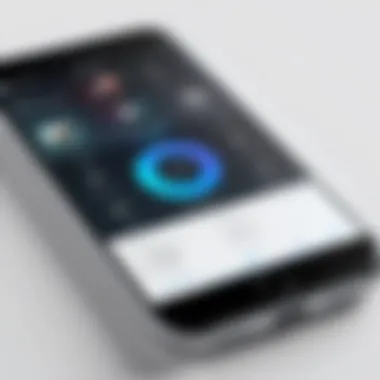
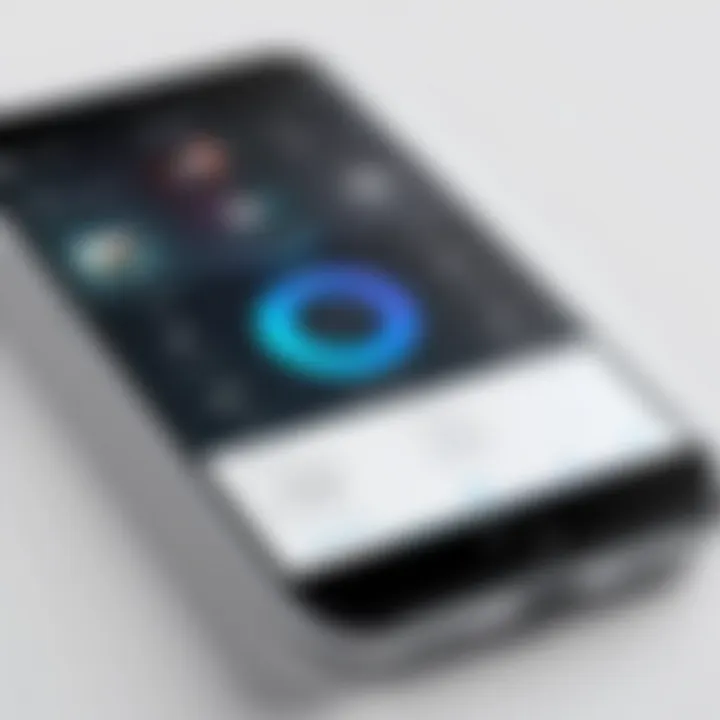
Intro
In a world that thrives on personalization, the ability to convert your favorite songs into ringtones is more than a simple hobby; it’s a way of expressing who you are. Whether it’s that catchy pop track from the charts or a classic rock anthem that gets you going, your mobile device can speak your language through sound. This guide explores how to effectively transform music into ringtones, shedding light on everything from the available tools to the legalities that come with it. With a careful approach, anyone can learn to customize their mobile experience, making it distinctively their own.
Overview of the Technology
Key specifications
When you delve into the world of ringtone creation, the specific devices and software you choose play a substantial role in the process. Here’s a glimpse at the key specifications you should consider:
- Audio Editing Software: Programs like Audacity and GarageBand enable users to edit and cut audio to create unique ringtones. They offer functionalities such as trimming, fading, and effects.
- File Formats: It's essential to know the formats supported by your mobile device. Most smartphones accept formats like MP3, M4A, and WAV.
- Compatibility: Ensure the tools you choose work seamlessly with your operating system, whether it’s iOS, Android, or others.
Unique Selling Points
Why bother going through the process of creation? Here are a few unique selling points:
- Customization: Rather than settling for generic ringtones, you can have your favorite parts of songs, quotes from movies, or even sounds that resonate with you personally.
- Bringing Spirit to Devices: A unique ringtone can reflect moods, interests, or even remind you of fond memories connected to a specific song or sound.
- Tech Savvy Appeal: For those who enjoy tinkering with tech, creating ringtones offers a satisfying project that allows one to showcase their skills.
Tools of the Trade
Creating ringtones requires some specific tools that can help streamline the experience:
- Audio Editing Software: As mentioned earlier, tools such as Audacity (available on Wikipedia) are indispensable for cutting and editing tracks.
- File Management Software: Depending on your phone, you might require iTunes for iOS or a file manager for Android to transfer files to your device.
Steps to Transform Music into Ringtones
- Choose Your Song: Pick the track that you want to use. Identify the section of the song you’d like to feature as your ringtone, preferably no longer than 30 seconds.
- Download and Install Software: If you haven’t yet, download an audio editing tool on your computer or mobile device.
- Edit the Track: Import the song, then trim it down to the desired segment. You may want to add fades or other effects to smooth out the transition.
- Export the File: Save your edited version in a format compatible with your mobile device.
- Transfer to Your Device: Use iTunes, a USB cable, or any file sharing service to get the ringtone onto your phone.
- Set it as Your Ringtone: Navigate to your phone’s settings to select your newly created ringtone.
"Creating your own ringtone can be a rewarding process that allows for personal expression in our increasingly digital lives."
Legal Considerations
When creating your own ringtones, it’s vital to be aware of the legal landscape surrounding music usage:
- Copyright Laws: Generally, most songs are protected by copyright, which means using them without permission could land you in hot water.
- Fair Use: In some cases, using a brief portion of a song can fall under fair use, but this can be tricky and varies by jurisdiction. Always do research for your specific locale.
Understanding these factors will not only keep you savvy but shield you from potential legal troubles as you venture into the world of ringtone creation.
Culmination
Transforming music into ringtones may seem like a complex task at first glance. However, with the right tools and by following the outlined steps, it can be a rewarding endeavor that not only enhances your mobile experience but allows for personal expression. Armed with this knowledge, you can take pride in your ability to customize your device with the sounds that resonate with you most.
Understanding Ringtones
In our contemporary digital landscape, ringtones have become a canvas for personal expression. They're not just a way to alert you about incoming calls; they reflect aspects of identity, preferences, and moods. Grasping the core principles surrounding ringtones sets the stage for further exploration in this guide.
Definition of a Ringtone
A ringtone is fundamentally an audio file that plays when a phone receives an incoming call or notification. While seemingly straightforward, this definition encompasses a variety of sounds—from classic telephonic rings to popular music snippets and even custom recordings. The versatility of ringtones makes them a significant aspect of contemporary mobile usage.
Evolution of Ringtones
The journey of ringtones stretches back to the early days of mobile telephony. Initially, ringtones were basic beeps and tones, a far cry from the rich soundscapes available today. With the advent of the Nokia 3310, monophonic ringtones emerged, transforming the ringtone landscape into a more customizable experience. Users could select simple tunes, often using software to compose their own sounds.
As technology advanced, polyphonic ringtones followed, allowing for richer sound with multiple instruments. Fast forward to the era of smartphones, and now, users can take their pick from entire song clips, remixes, or even custom audio clips. This progression represents a shift in user engagement—ringtones evolved from mere alerts to genuine extensions of personal identity.
Popular Formats for Ringtones
When it comes to saving and using ringtones, knowing the formats is key. The most common formats for ringtones include:
- MP3: The go-to format for many. Its compatibility with most devices is a big plus, but be cautious of the file size.
- M4A/M4R: Specifically for Apple devices, M4R files are popular among iPhone users. They offer good sound quality in a smaller size.
- OGG: An open-source format that provides a balance of quality and compression, often used by Android users.
- WAV: Offers high-quality sound but can take up more storage space. Generally best for those who prioritize sound over file size.
For the savvy user, selecting the appropriate format not only enhances playback but also ensures compatibility across devices, thereby smoothing the transition into the personalized ringtone arena.
Why Customize Your Ringtone
Ringtones play a significant role in how we interact with our devices. Rather than settling for generic sounds, customizing your ringtone can add a layer of personal identity. In today’s rapidly evolving digital world, expressing ourselves through technology has become vital. Personalizing your ringtone allows you to showcase your individual taste in music while enhancing your mobile experience in meaningful ways.
Personal Expression
Using a custom ringtone is a form of self-expression, akin to wearing your favorite band t-shirt or showcasing unique art in your living space. When your phone rings, it becomes a snapshot of who you are, capturing a moment of your personality. The song or sound you choose can reflect your mood, interests, or even memories associated with that particular track. A favorite melody might remind you of special moments — birthdays, travels, or even quiet evenings spent relaxing. Your ringtone, therefore, is more than just a sound; it’s a personal touchpoint that everyone around you can hear.
Enhancing Identification
Another strong reason for customizing your ringtone is the improvement it brings to identifying notifications. Most smartphones come with a set of default ringtones that might sound indistinguishable from each other in a crowded environment. By creating a ringtone that resonates with your personality, you’re essentially crafting an audio signature. Let’s say you receive a call and your chosen tune plays — you'll instantly recognize it as yours, preventing confusion with other people's notifications. Additionally, particular styles of music can evoke immediate recognition or even spark joy every time that ringtone plays, making the experience a bit more enjoyable day-to-day.
Creating Unique Sounds
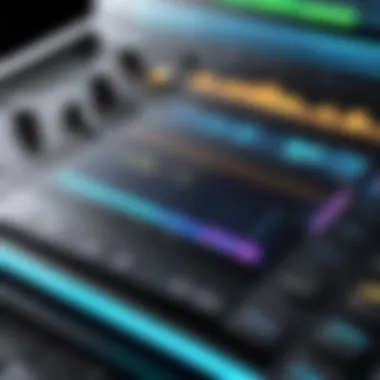

With the plethora of music editing tools available today, the possibilities for unique sound creation are practically endless. Beyond just slicing a track, you can easily modify it, adding effects that resonate with your personal style. Want a jazzy trumpet riff instead of a pop chorus? Or perhaps a moody synth pad that reflects your love for electronic music? This creativity opens the door to a completely tailored mobile experience. Think about engaging your peers too; a catchy or humorous ringtone might be a conversation starter or even a light-hearted joke among friends. Engaging in this aspect of customization not only enhances your own enjoyment but can also draw others into your world, creating a shared experience through sound.
"Personalizing your ringtone is not just about making noise; it's about shaping how you connect with your world."
The Process of Creating Ringtones
Creating ringtones from your favorite songs is not just a creative outlet; it’s also a way to express your style and personality in a world where your choice of music can speak volumes. This section delves into the various aspects of transforming tunes into ringtones by laying out a clear, step-by-step guide that anyone can follow, regardless of technological prowess.
Selecting a Song
The most crucial step in this process is selecting the right song. It should resonate with you, be easily recognizable, and ideally, have a memorable part that works well as a ringtone. When considering a track, think about the moments it evokes or the feelings it stirs. The catchier the part, the better it will sound as a ringtone.
When making your choice, keep in mind the typical length of a ringtone—usually 20-30 seconds. A chorus or distinctive instrumental section often garners better attention than lengthy verses or elaborate bridges. Ultimately, whether it’s a classic favorite or a fresh hit song, your perfect ringtone is just waiting to be mined from your music library.
Choosing the Right Software
Selecting appropriate software can make or break your ringtone crafting experience. There exists a plethora of options, from specialized ringtone creation applications to comprehensive audio editing programs.
Some popular choices include:
- Audacity: An open-source, multi-platform audio editing tool that allows for advanced editing features.
- GarageBand: For Mac users, this is a user-friendly program to create and edit music with lots of built-in features.
- Ringtone Maker: This mobile application is designed specifically for creating ringtones on-the-go.
Each choice has its nuances; while GarageBand might be tailored for musicians, Audacity offers greater control for editing. Choose according to your comfort level and specific needs.
Editing Audio Files
Once you have your song in mind and software selected, the real fun begins: editing!
Trimming
Trimming involves cutting the audio track to just the section you want for the ringtone. This is the heartbeat of ringtone creation, and it's what makes editing both straightforward and enjoyable.
One key characteristic of trimming is its ability to emphasize specific audio snippets. It helps ensure that your chosen ringtone isn't too lengthy, making it more striking. Trimming allows for more straightforward, punchy ringtones. However, if not done judiciously, you might risk losing the essence of the song. To avoid this, focus on selecting parts that encapsulate the track’s core feel.
Fading In and Out
Adding fade-in and fade-out effects is another step that enhances the listening experience, making transitions smoother. When sending a ringtone to your friends or using it for notifications, you might notice abrupt starts and stops without these effects. Fade-ins gradually increase the volume from zero, while fade-outs gently decrease volume to silence.
This practice is beneficial, particularly for songs with strong beats or jarring beginnings. However, excessive fading might also detract from that immediate punch that some songs delivers right from the get-go. Striking a balance is key—keep it natural and fitting to the track.
Adding Effects
The creativity doesn’t end with trimming and fading; adding special effects like reverb or tempo changes can elevate your ringtone above the rest. Effects can transform a simple snippet into something truly unique.
What’s appealing about adding effects is that it opens up a world of sonic possibilities. It may give your ringtone a fuller sound or even create a sense of space. However, too many effects can muddy the end product, making it sound cluttered or incoherent. The trick lies in moderation—aim for upliftment, not chaos.
Saving in the Correct Format
Finally, saving the edited audio file in the correct format is a tip that’s easier said than done. Different devices require different formats; for example, iPhones prefer M4R files, while Android devices often handle MP3s just fine.
When saving your creation, pay attention to quality settings. A bit rate between 128 and 256 kbps usually strikes a solid balance between sound quality and file size. Additionally, naming your ringtone intuitively can save you time later when searching through your files.
In summary, creating a ringtone may initially seem daunting, but breaking it down into these steps can simplify the process significantly. Remember to enjoy crafting something uniquely yours!
Transferring Ringtones to Devices
Transferring ringtones to devices is a crucial step in the process of personalizing your mobile experience. While creating the perfect ringtone is an art in itself, effectively moving that custom audio onto your smartphone is where the magic truly happens. This section covers the methods and technology behind transferring ringtones to both iOS and Android devices, focusing on the specific tools and considerations involved. Understanding this topic ensures that the unique sounds you crafted are easily accessible right at your fingertips.
For iOS Devices
Using iTunes
Using iTunes to transfer ringtones is a classic approach favored by many iOS users. This software serves as a comprehensive media manager, allowing you to organize and sync a multitude of files, including ringtones. One of the primary characteristics that makes iTunes a go-to choice is its built-in synchronization capabilities with iPhone devices. This is particularly useful for users who frequently update their audio files, as it can seamlessly manage changes with minimal fuss.
However, the process can sometimes be a bit finicky. For instance, you might find yourself navigating through various menus just to find the right settings to add ringtones. The unique feature of iTunes is its ability to convert specific audio files into the M4R format, which is required for ringtones. While this offers flexibility, it also adds an extra layer of complexity for those unfamiliar with the software.
Advantages:
- Centralized control of all media files.
- Automatic syncing with connected devices.
Disadvantages:
- A learning curve for new users.
- The need for manual updates can be cumbersome.
Direct Install via iPhone
Direct install via iPhone is another method that has gained traction among users wanting quick access to their ringtones. This option allows users to bypass iTunes entirely by downloading the ringtone file directly to their device via various means, such as email or cloud storage. The simplicity of this method is its main appeal. Just a few taps on the iPhone can get you from receiving the file to applying it as your ringtone.

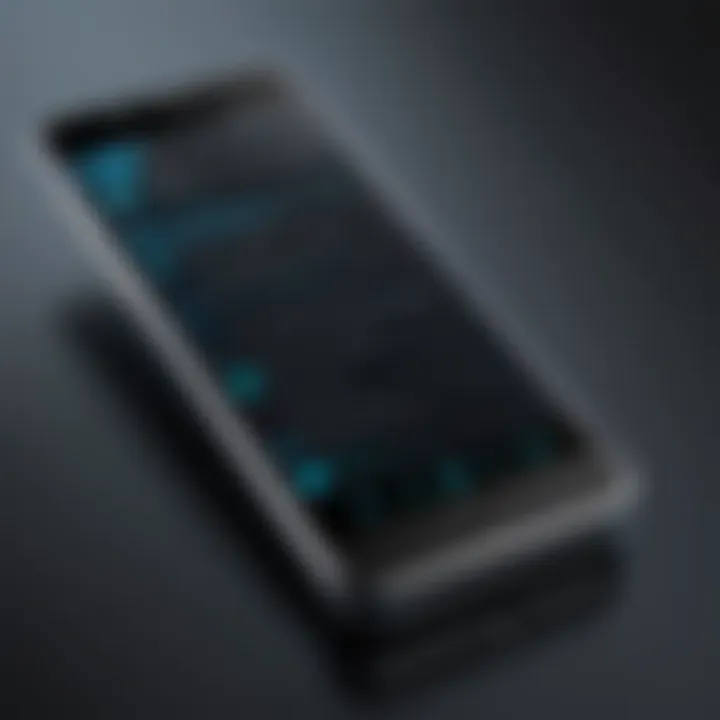
One of the standout features here is the convenience factor. When compared to using iTunes, this method lets users customize their devices quickly without needing a computer. However, this approach can also be limited by file size restrictions and the need for a compatible audio format.
Advantages:
- Quick and straightforward process.
- Doesn't require a computer for transfer.
Disadvantages:
- Limited options may exclude larger or complex audio files.
- Potential issues with format compatibility.
For Android Devices
Using File Transfer
Transferring ringtones using a file transfer method on Android devices is widely appreciated for its straightforward approach. This involves connecting your Android phone to a computer using a USB cable, and then dragging and dropping the desired ringtone files directly into the phone’s ringtone folder. The ease of access to file systems on Android devices makes this a natural choice for many.
The distinguishable feature of file transfer is its straightforwardness. Users can manage their respective ringtone files without any intermediary software, making the process feel direct and personal. However, this may not be the smoothest experience for everyone, especially those who may not be comfortable navigating file systems.
Advantages:
- Direct and easy approach for tech-savvy users.
- No additional software needed, making it quick.
Disadvantages:
- May be complicated for less experienced users.
- Requires a physical connection, which could restrict mobility.
Third-Party Apps
Using third-party apps offers a unique alternative for transferring ringtones, allowing for an even richer variety of methods to manage your sounds. There are numerous applications available on Android that can facilitate the downloading and setting up of custom ringtones directly from your device. Some popular ones include Zedge, Ringtone Maker, and Ringtones for Android.
The key characteristic of using third-party apps is their capability to provide additional features, such as a database of pre-made ringtones, tools for editing existing audio files, and user-friendly interfaces that simplify creating custom sounds. However, it's worth noting that the quality and reputation of apps can vary significantly, meaning users should be cautious in choosing what to install.
Advantages:
- User-friendly interface with additional features.
- Access to a wider variety of sounds and ringtones.
Disadvantages:
- Potential for security risks with less reputable apps.
- Quality of sound and options can vary widely.
Legal Considerations
Understanding the legal landscape around creating and using ringtones is crucial for anyone looking to personalize their mobile device. This section aims to shed light on several vital elements: copyright law, fair use, and the importance of avoiding piracy. Getting familiar with these aspects not only helps in staying on the right side of the law but also ensures a smoother and less stressful ringtone creation experience.
Copyright Context
When it comes to music, copyright laws are somewhat akin to the tip of the iceberg. At its core, copyright protects the original works of authorship, which includes musical compositions and recordings. When you select a song to transform into a ringtone, you’re inherently dealing with the rights set forth by the copyright holders, typically the songwriters and the record labels.
Using a copyrighted song without permission could land you in hot water. Legally speaking, distributing or selling ringtones made from such songs usually requires you to seek licenses or permissions. For many folks, this might seem daunting, but it’s important to remember that not all music is under strict copyright. Some artists offer their music under creative commons licenses, which might allow free usage in certain conditions.
So, what’s one to do? The most straightforward approach is to either create your own music or utilize tracks from royalty-free libraries, which let you create ringtones without sweating the legal stuff. Always verify if the music is indeed free to use for your intended purposes to avoid any missteps.
Fair Use and Personal Use
The term fair use can sound like a legal safety net, but it’s important to know it’s not an all-encompassing shield. Fair use allows limited use of copyrighted material without permission from the rights holders, but the parameters are often subjective and specific to each case.
In practice, if you're making a ringtone just for personal use and won’t distribute it, there’s a case to be made for fair use. However, it’s essential to be cautious. Courts often analyze fair use on a case-by-case basis, considering factors like:
- The purpose and character of the use (commercial vs. educational).
- The nature of the copyrighted work.
- The amount used in relation to the whole work.
- The effect of the use on the market for the original work.
That said, while personal use could lean towards fair use, it's recommended to tread lightly. If your intention is to share that ringtone, even among friends, you might want to reconsider and look for music that is explicitly free or licensed for such distribution.
Avoiding Piracy Issues
Piracy is a hot-button issue in the realm of media, including music ringtones. Defined simply, piracy refers to the unauthorized reproduction or distribution of copyrighted materials. Not only is this practice illegal, but it can also lead to hefty fines or other legal repercussions.
To steer clear of piracy:
- Always use trusted sources for downloading or creating ringtones. Look for platforms that are not just user-friendly but also reputable.
- When engaging with peer-to-peer networks or sketchy downloads, if it seems too good to be true, it probably is. Prioritize legitimate avenues for music.
- Get familiar with the platform rules. Some apps or websites allow downloading only if you possess the rights or licenses.
In summary, being informed about copyright context, the nuances of fair use, and how to dodge piracy pitfalls will not only keep you compliant with the law but also enhance your ringtone crafting journey.
Exploring Online Resources
In the current digital landscape, the importance of online resources in crafting personalized ringtones cannot be understated. These resources simplify the transition from your favorite tracks to a customized ringtone, providing not only the necessary tools but also a wealth of information to streamline the process. Furthermore, utilizing reputable online resources helps to ensure adherence to legal standards while widening your creative horizons. As we further explore the nuances of what’s available, key elements emerge that can enhance your ringtone-making experience significantly.
Legal Ringtone Download Platforms
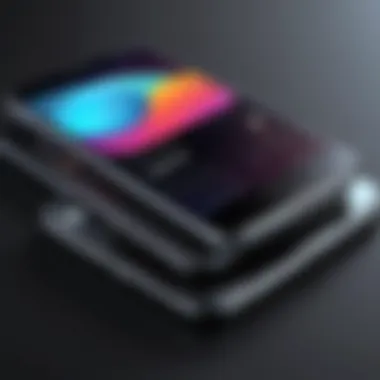
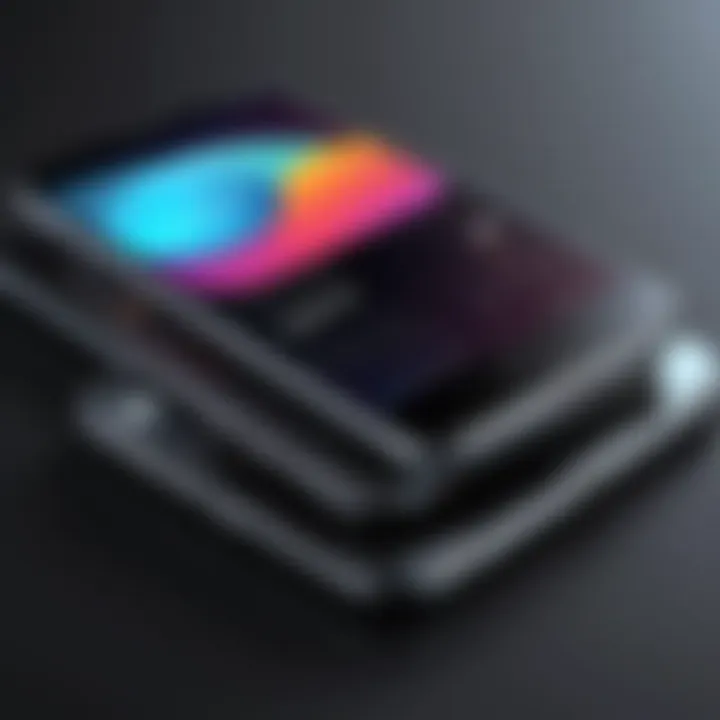
Navigating the murky waters of copyright law can be daunting, especially when it comes to music. This is where legal ringtone download platforms come into play. These websites offer a treasure trove of melodies that are not just free from legal quandaries but also cater to a variety of tastes. Unlike a backyard barbecue where you risk serving cold leftovers, these platforms ensure that you’re always getting quality options.
Some of the well-known platforms include:
- Zedge: Known for its vast library of ringtones, wallpapers, and notification sounds, Zedge provides users with the ability to browse through a multitude of genres. It's user-friendly and designed to easily navigate, making it a popular choice for many.
- Ringtone Maker: This platform lets you create your custom ringtones right from their database of music, ensuring that you find that special part of the song that speaks to you. The interface is straightforward, encouraging creativity without excessive complications.
- Audiko: It allows users to upload their music, which then can be altered into ringtones. It has a community aspect, where users can share and rate each other's creations.
When utilizing these platforms, consider how the licensing agreements work. While many offer free downloads, some may require payment for premium tracks. Keep an eye out for any restrictions on usage, to avoid any unexpected pitfalls.
Music Editing Software Options
Once you've gathered the music you want to transform into ringtones, you’ll need tools for editing. There’s a wide array of music editing software options available, each tailored for varying levels of expertise and specific needs.
For beginners, simpler software can provide a gentle introduction. Programs like GarageBand on Mac make creating unique ringtones a breeze with its intuitive drag-and-drop interface. If you're using Windows, Audacity is a popular choice, recognized for its robust functionalities and versatility; you can trim, fade, and add effects to your chosen track.
For more seasoned users, Adobe Audition offers a comprehensive suite of editing tools, although it requires a bit of a learning curve. It's perfect for those who want to dive deep into sound design. Other software options to consider are:
- WavePad: Similar to Audacity but simpler for novice users, WavePad enables you to cut, copy, and paste parts of recordings. It also supports various file formats, providing a flexible workflow.
- Soundtrap: This online platform not only enables audio editing but also collaboration with other creators. It’s a good option for anyone looking to work with friends or fellow musicians.
These tools not only empower users to customize their ringtones effectively but, importantly, they make the audio editing process enjoyable and straightforward. Each selection accommodates distinct preferences and workflows, promising a fulfilling ringtone creation experience.
Remember: The right software for you may hinge on your familiarity with music editing. Experimenting with a few options may lead you to what feels best.
Troubleshooting Common Issues
In the journey to transform your favorite music into personalized ringtones, you might encounter a few bumps along the road. This section addresses some common issues that can crop up, arming you with the know-how to handle these situations smoothly. Knowing how to troubleshoot can mean the difference between continuous enjoyment of your personalized tunes and frustration with technology. Let’s dive into the nitty-gritty of these common problems, how they can affect your experience, and what you can do about them.
File Format Errors
When creating ringtones, the file format you choose plays a pivotal role in ensuring compatibility with your device. Ringtones need to be in a format that your smartphone or tablet recognizes. Common formats include M4R for iOS devices and MP3 for Android. However, if you have music files in a less common format like FLAC or WAV, it won't do the trick.
If your ringtone isn’t working, check if it’s saved in an appropriate format. Here’s how you can address this:
- Convert the file: Many tools are available online for free or at a minimal cost where you can convert your files easily.
- Ensure the extension is correct: Sometimes, all that's needed is a quick rename of the file extension, but be cautious with this approach.
Taking these steps can often resolve problems associated with unrecognized files, clearing the way for your perfect ringtone sound.
Ringtone Not Appearing
Have you ever experienced the disappointment of creating an ideal ringtone only to find it doesn’t even show up on your device? This issue can crop up due to several reasons. It’s frustrating, but troubleshooting this one isn’t as hard as it may seem. Here’s what to consider:
- Sync Issues: Make sure that the ringtone has been synced properly to your device. Especially with iPhones, syncing through iTunes isn’t just a formality—it’s necessary for the ringtone to be accessible.
- Sound Settings: Check if your device settings allow for custom ringtones. Sometimes, the default settings only promote factory ringtones or notifications.
- Storage Space: If your device is nearing its storage limits, it may reject new incoming files, including your newly created ringtone.
By following these checks, you can often spot the issue keeping your custom rings out of sight.
Sound Quality Concerns
Creating a ringtone might seem straightforward, but sound quality can often leave users scratching their heads. When you transform a full song into a ringtone, the final product could sound different from what you expected—too muffled, too low, or too high-pitched.
To tackle sound quality issues, consider these tips:
- Use high-quality audio: The quality of the original audio file matters. Starting with a high-quality recording can mitigate many sound problems.
- Adjust audio settings during editing: Many editing software tools let you adjust levels, equalizers, and more. Don’t hesitate to mix and match until it sounds right.
- Test on multiple devices: Sometimes, the ringtone may sound fantastic on one device but not another. Testing it on various devices can help you gauge what tweaks might be necessary.
"Creating great ringtones isn't just about picking a song; it's about making it sound exactly the way you want!"
By keeping these troubleshooting tips in mind, you can ensure your ringtone journey is as smooth as possible. Don't hesitate to roll up your sleeves and give these fixes a shot!
Future of Ringtones
As we look ahead, the landscape of ringtones is poised for transformation. This segment of the guide delves into what we might expect in the realm of ringtone creation and personal usage. Ringtones have long been an integral part of mobile identities, and their evolution is closely tied to both technological progress and user desire for personalization.
In recent years, the trend of customizing ringtones reflects broader shifts in how individuals interact with their devices. No longer are we simply satisfied with factory settings; instead, we crave unique sounds that resonate with our personalities. The future of ringtones seems to embody this thirst for individuality and expression.
Trends in Personalization
Personalization is becoming a hallmark in many domains, and ringtones are no exception. As we continue into a world where "one size fits all" approaches fall flat, the desire for bespoke audio experiences is on the rise.
Some notable trends include:
- User-Generated Content: More users are creating their own sounds, utilizing various applications that facilitate audio editing. This opens the door for a wave of creativity, allowing anyone with basic skills to craft a tune just for them.
- Social Media Influences: Platforms like TikTok have popularized specific sound bites and snippets that catch on like wildfire, leading to an increase in ringtone customization around these viral hits.
- Integration with Smart Technology: As homes become smarter, the ability to sync ringtones across devices elevates their relevance. Imagine your smart speaker echoing the same tune as your phone; that interconnectedness fosters a unique personal soundscape.
"The future of ringtones is more personal, vibrant, and interconnected than ever before."
These trends demonstrate that ringtones are not just about alerts but rather about making a statement and connecting through sound.
Technological Advances in Ringtone Creation
Technological advances are a key driving force behind the changes in ringtone design and usage. New tools are making it easier than ever for users to create, modify, and share their unique sounds.
Points to consider include:
- Enhanced Audio Editing Software: Advances in audio editing tools allow for more sophisticated modifications. Programs like Audacity and GarageBand now come packed with features that enable users to layer sounds, add effects, and creatively alter their tunes to suit their style.
- AI-Powered Applications: Artificial intelligence is beginning to play a noteworthy role in shaping audio content. Such applications can analyze user preferences and automatically generate custom ringtones based on what they like. This could represent a notable shift, moving from manual selection to a more tailored audio experience.
- High-Quality Sound Formats: The shift toward higher-quality audio files ensures that your ringtone not only sounds unique but also crisp and clear. Formats like .m4a and .flac are gaining traction, promising richer sound quality to enhance user satisfaction.
As we stand on the brink of these advancements, there's no doubt that the future of ringtones holds exciting possibilities for innovation, creativity, and identity expression.







